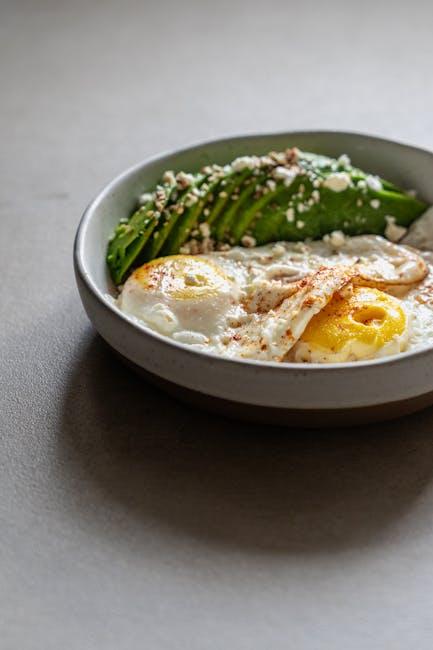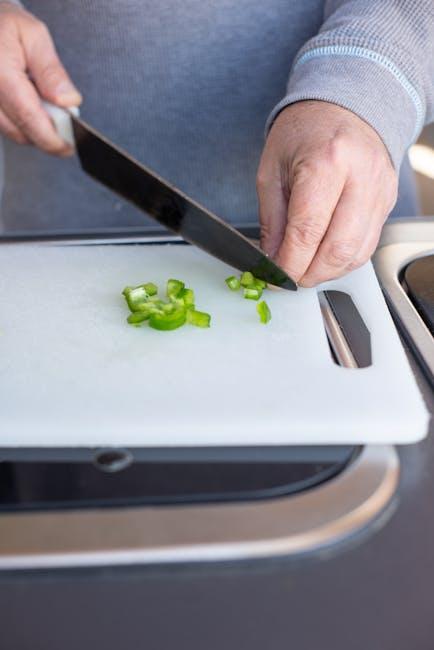Embarking on a journey is often a thrilling adventure, filled with new sights, tastes, and experiences. But for those following the GAPS (Gut and Psychology Syndrome) diet, traveling can present a unique set of challenges. Balancing the desire to explore with the need to maintain strict dietary protocols requires careful planning, creativity, and a touch of flexibility. In this article, we’ll delve into practical strategies and thoughtful tips to help travelers stay on track with the GAPS diet, ensuring that their wanderlust and wellness go hand in hand no matter where the road leads.
Table of Contents
- Planning Your Travel Menu with GAPS Diet Essentials
- Navigating Restaurants and Food Choices on the GAPS Diet
- Packing Smart Snacks to Stay on Track Anywhere
- Managing Social Situations and Travel Stress
- Adapting Meals and Maintaining Routine Away from Home
- Q&A
- To Conclude

Planning Your Travel Menu with GAPS Diet Essentials
Embarking on a trip while adhering to the GAPS diet means taking a proactive approach to your meals. Prioritize packing nutrient-dense, portable snacks that align with GAPS guidelines, such as homemade bone broth cubes, fermented vegetables in sealed containers, and crisp veggie sticks paired with homemade dips. These options not only curb hunger but also keep your gut health intact during travel. Remember, many GAPS-friendly foods require refrigeration or careful handling, so investing in a quality insulated cooler bag is a wise choice.
Strategizing your eating schedule while journeying can ease potential disruptions to your digestive system. When dining out, scout locations ahead of time where simple, GAPS-compliant meals can be sourced—think restaurants offering fresh, unprocessed meats and steamed vegetables. Here’s a quick reference table for easy travel meal components:
| Food Type | Travel-friendly GAPS Options |
|---|---|
| Proteins | Boiled eggs, canned wild fish, cooked chicken strips |
| Fermented Foods | Small jars of sauerkraut, kimchi, yogurt |
| Snacks | Olives, coconut chips, nut butter packets |
| Beverages | Herbal teas, bone broth, mineral water |

Navigating Restaurants and Food Choices on the GAPS Diet
Dining out while following the GAPS diet requires a bit of strategy and creativity. Start by researching restaurants that offer customizable menus or focus on fresh, whole foods. Many establishments are increasingly willing to accommodate dietary needs if you communicate clearly. Prioritize dishes that feature freshly cooked meats, fish, and vegetables prepared without heavy sauces, sugars, or processed ingredients. When in doubt, don’t hesitate to call ahead and discuss your requirements with the chef or manager to ensure your meal aligns with GAPS principles.
Additionally, packing GAPS-friendly snacks will keep you on track during travel days or lengthy outings. Consider items like homemade bone broth, fermented vegetables, boiled eggs, or coconut chips. If choosing a restaurant, focus on these key components:
- Grass-fed or pasture-raised proteins cooked simply
- Avoidance of grains, sugars, and starches
- Fermented foods or probiotic-rich sides when possible
- Freshly prepared soups and broths
| Dish | Possible GAPS-friendly Substitutions | Notes |
|---|---|---|
| Salad with Croutons | Lettuce or kale, fermented pickles instead of croutons | Avoid breads; add olive oil-based dressing |
| Grilled Chicken | Grass-fed chicken with steamed veggies | Request no marinades or sugar-based sauces |
| Fish and Chips | Grilled fish with a side of fermented vegetables | Skip the fries; focus on bone broth if available |

Packing Smart Snacks to Stay on Track Anywhere
When adhering to the GAPS diet on the go, having nourishing, convenient snacks at hand is essential. Opt for items that are easy to store and won’t spoil quickly, such as homemade beef jerky,
To streamline your snack options, consider assembling a simple packing list with essentials that are both GAPS-approved and travel-friendly:
- Hard-boiled eggs – rich in protein and portable
- Homemade bone broth cubes – can be warmed up anywhere
- Vegetable sticks like cucumber or carrot with homemade dip
- Avocado slices in a sealed container for healthy fats
- Natural fermented pickles for probiotics and flavor
| Snack | Benefits |
|---|---|
| Beef Jerky | High protein, portable |
| Fermented Veggies | Probiotics, gut health |
| Hard-Boiled Eggs | Rich in vitamins & protein |
| Nuts & Seeds | Healthy fats, energy |
| Bone Broth Cubes | Easy digestion, comfort |

Managing Social Situations and Travel Stress
Traveling on the GAPS diet doesn’t mean you have to sacrifice social gatherings or feel overwhelmed while on the road. One key strategy is planning ahead, which includes packing homemade snacks or meals that comply with your diet. This helps avoid the stress of wondering if there will be suitable food options at your destination. When dining out or attending events, don’t hesitate to communicate your dietary needs clearly but politely. Most hosts and restaurants appreciate having this insight and can often accommodate simple requests if informed in advance.
To maintain your peace of mind, incorporate stress-relief techniques such as breathing exercises or short walks during layovers and social events. Connecting with companions about your diet can also turn meals into engaging conversations instead of points of anxiety. Below is a quick reference table featuring easy-to-carry, GAPS-friendly travel snacks that travel well and keep your energy levels steady:
| Snack | Benefits | Portability |
|---|---|---|
| Beef Jerky (homemade) | High protein, no preservatives | Compact, long shelf life |
| Hard-Boiled Eggs | Rich in nutrients, satiating | Easy to transport in cooler bag |
| Fermented Veggies | Gut-friendly probiotics | Sealed small jars or containers |
| Nut Butter Packets | Good fats, quick energy | Single-serve, mess-free |

Adapting Meals and Maintaining Routine Away from Home
Traveling on the GAPS diet requires a bit of ingenuity and planning, but it doesn’t have to be overwhelming. Start by packing a selection of portable, compliant snacks such as fermented vegetables, homemade meat jerky, or hard-boiled eggs. These can serve as quick fixes when dining options are limited. Research local markets or specialty stores near your destination ahead of time—having a list of trusted spots can ease the stress of finding suitable ingredients. When eating out, don’t hesitate to customize dishes by requesting simple grilled meats, steamed veggies, and olive oil or butter-based dressings instead of processed sauces.
Maintaining your routine while away also means keeping your meal schedule consistent and planning for hydration and digestion support. Here’s a simple checklist to guide your travel preparations:
- Compile a travel-friendly GAPS food kit
- Identify restaurants with flexible menus
- Carry supplements and probiotics essential to your routine
- Keep a portable cooler if refrigeration is needed
- Plan rest stops to enjoy meals without rush
| Meal Time | GAPS-Friendly Options | Tips |
|---|---|---|
| Breakfast | Eggs & sautéed greens | Bring small non-stick pan for cooking |
| Lunch | Homemade bone broth & fermented veggies | Use insulated containers to keep warm |
| Dinner | Grilled chicken with steamed zucchini | Request simple preparations at restaurants |
Q&A
Q&A: Traveling While on the GAPS Diet
Q: What is the GAPS diet, and why might traveling while on it be challenging?
A: The GAPS (Gut and Psychology Syndrome) diet is a strict nutritional protocol designed to heal the gut lining and improve neurological and digestive health. It emphasizes homemade, nutrient-dense foods while eliminating many processed and gut-irritating ingredients. Traveling on the GAPS diet can be tricky because it limits convenient options, often requiring careful planning, patience, and resourcefulness.
Q: How can someone prepare for travel while maintaining the GAPS diet?
A: Preparation is key! Start by researching your destination’s food availability. Pack GAPS-friendly snacks like homemade meat jerky, boiled eggs, fermented veggies, or bone broth in travel-safe containers. Consider bringing portable kitchen tools or arranging accommodation with kitchen access. Planning meal stops or communicating dietary needs ahead can also help ensure smoother mealtime experiences.
Q: What are some GAPS-approved travel snacks that are easy to bring along?
A: Ideal snacks include homemade nut butters, cooked and peeled sausage, fermented pickles or sauerkraut in travel-sized jars, boiled eggs, and dried fruit (without added sugars). Bone broth in thermos bottles offers warmth and nourishment too. Remember to respect any airport security rules for liquids and packaging.
Q: How can travelers manage eating out while on the GAPS diet?
A: Eating out is doable but may require special requests. Opt for simple, whole-food dishes like grilled meats, steamed vegetables, and homemade soups, avoiding bread, starches, and processed dressings. Call ahead to explain your dietary restrictions, or choose restaurants that prepare meals from scratch. Bringing your own condiments or dressings can also help customize your meals.
Q: What mindset is helpful for someone traveling on the GAPS diet?
A: Flexibility balanced with dedication is essential. Accept that some dietary adjustments may be necessary without compromising core GAPS principles. Use travel as an opportunity to get creative with food preparation and embrace local, fresh ingredients. Remember, the goal is healing and nourishment, so small compromises may sometimes be part of the journey.
Q: Are there any tools or apps that can assist with GAPS diet travel planning?
A: Absolutely! Nutrition and allergy apps can help identify safe foods or ingredients. Travel apps with restaurant reviews focused on specialty diets, as well as meal-planning platforms, can streamline your experience. Keeping a digital copy of your dietary guidelines and communications with hosts or restaurants can save time and reduce stress.
Q: Can traveling impact the effectiveness of the GAPS diet?
A: Short trips with good planning generally do not disrupt progress. However, prolonged indulgence in non-GAPS foods or irregular meals might slow healing or cause symptoms. Staying mindful, prepared, and proactive minimizes risks, turning travel into a nourishing extension of your healing journey.
Traveling on the GAPS diet requires a blend of preparation, creativity, and resilience. With thoughtful planning and a positive mindset, it’s entirely possible to nourish both body and spirit no matter where your travels take you.
To Conclude
Traveling while on the GAPS diet may require extra planning and mindfulness, but it is far from impossible. With a little creativity and preparation, you can navigate new environments and savor your journey without compromising your dietary goals. Embracing flexibility and staying connected to your nutritional needs allows you to transform travel from a potential challenge into an enriching experience that supports both your health and your zest for discovery. After all, the world is vast—and with the right approach, so are your possibilities.














Leave feedback about this